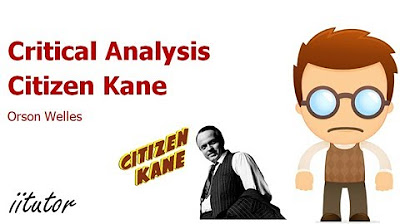How to Analyse a Film - Cinematic Techniques
Summary
TLDRLeila from Ignite offers a comprehensive guide on film analysis, focusing on five key techniques: shot angles, shot duration, mise-en-scène, symbolism and metonymy, and sound analysis. She explains the significance of each aspect, providing examples to illustrate their impact on tone and narrative. The video aims to build viewers' confidence in dissecting cinematic form, especially for high school students preparing for exams.
Takeaways
- 📚 Leila from Ignite provides an overview of film analysis techniques for educational purposes.
- 🔍 The first technique is analyzing shot angles, which includes close-up, mid-range, bird's eye, extreme close-up, and long shots.
- ⏱ The second technique is considering the duration of shots, which can affect the tone and pacing of a film scene.
- 🎨 The third technique involves breaking down mise-en-scène, which includes settings, lighting, costuming, and props within a scene.
- 🌐 Mise-en-scène also considers the symbolic and metonymic elements that contribute to the scene's meaning.
- 🔍🔊 The fourth technique is exploring the symbolic and metonymic values within a film, beyond just the visual elements.
- 🎵 The fifth technique is analyzing sound, distinguishing between diegetic sounds that come from within the scene and non-diegetic sounds that come from outside.
- 📉 The use of leitmotifs in sound, recurring throughout a film, can build suspense and signify certain themes or events.
- 📝 When analyzing film, start sentences with the shot angle used to provide a clear structure for the analysis.
- 🎬 The video provides examples from the film 'Eternal Sunshine of the Spotless Mind' to illustrate the discussed techniques.
- 🔗 Ignite offers an online resource database with materials created by state rank achievers and heads of English for further study.
Q & A
What is the main topic of Leila's video from Ignite?
-The main topic of Leila's video is an overview of how to analyze film, covering five key techniques for film analysis.
What are the five go-to techniques Leila mentions for analyzing film?
-The five techniques are: 1) Analyzing shot angles, 2) Considering the duration of shots, 3) Breaking down mise-en-scène, 4) Considering symbolism or metonymy within scenes, and 5) Analyzing diegetic and non-diegetic sounds.
What does Leila suggest as a starting point for film analysis sentences?
-Leila suggests starting sentences with the shot angle being used as a way to introduce the analysis.
What is the significance of shot angles in film analysis according to the video?
-Shot angles provide insight into the emotions or key aspects of a scene, and they can influence the audience's perception and understanding of the narrative.
Can you explain the difference between diegetic and non-diegetic sounds in film?
-Diegetic sounds come from within the frame of the film, such as characters' voices or sounds made by objects in the scene. Non-diegetic sounds are external to the scene, like background music, which can contribute to or alter the tone of the film.
What is mise-en-scène and why is it important in film analysis?
-Mise-en-scène is the composition of everything within the frame, including settings, lighting, costumes, and props. It's important because it helps convey the mood, context, and meaning of a scene.
How does the duration of a shot affect the tone of a film sequence?
-The duration of a shot can heighten tension in action sequences with frequent cuts or calm the audience with longer, less frequent cuts, thus influencing the emotional impact of the scene.
What is an example of a symbolic element in a film scene according to the video?
-An example of a symbolic element is a crack in the ice between two characters, which could symbolize the cracks in their relationship.
What is a leitmotif in film and how does it function?
-A leitmotif is the repetition of certain sounds or themes within a film that hold symbolic value, often used to build suspense or signal the arrival of a character or event.
How does the video suggest using the online resource database from Ignite?
-The video suggests checking out the online resource database at ignitehse.com.edu for additional materials on essay structures, writing craft, and comprehension skills.
What is the purpose of the video's final example using the film 'Jaws'?
-The purpose of the 'Jaws' example is to illustrate how diegetic and non-diegetic sounds function in film, particularly how a leitmotif can build suspense and affect the audience's emotional response.
Outlines

This section is available to paid users only. Please upgrade to access this part.
Upgrade NowMindmap

This section is available to paid users only. Please upgrade to access this part.
Upgrade NowKeywords

This section is available to paid users only. Please upgrade to access this part.
Upgrade NowHighlights

This section is available to paid users only. Please upgrade to access this part.
Upgrade NowTranscripts

This section is available to paid users only. Please upgrade to access this part.
Upgrade NowBrowse More Related Video
5.0 / 5 (0 votes)





